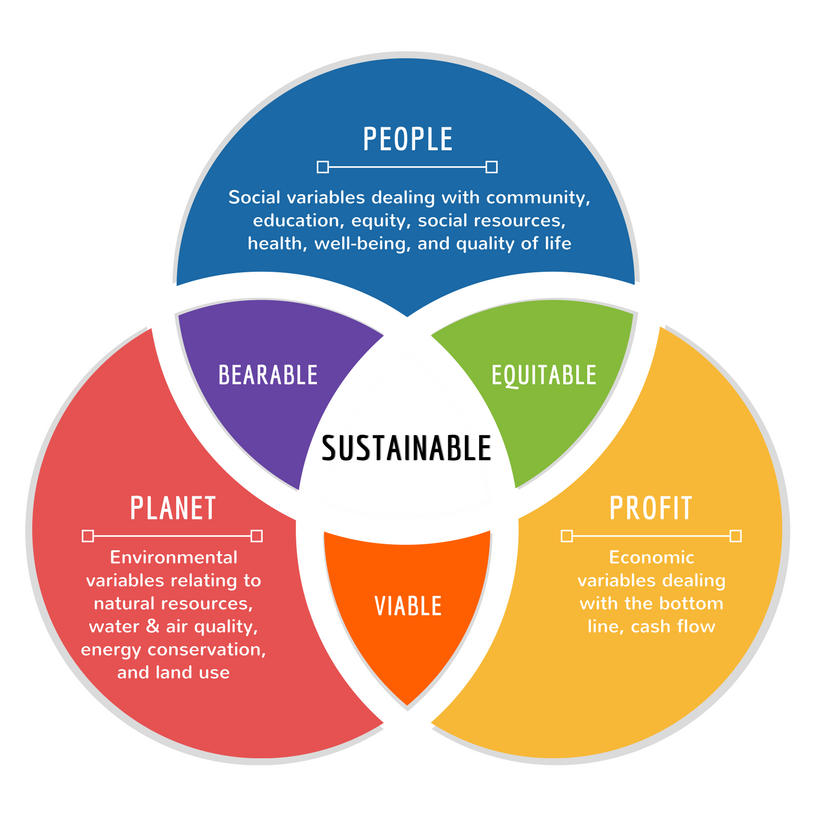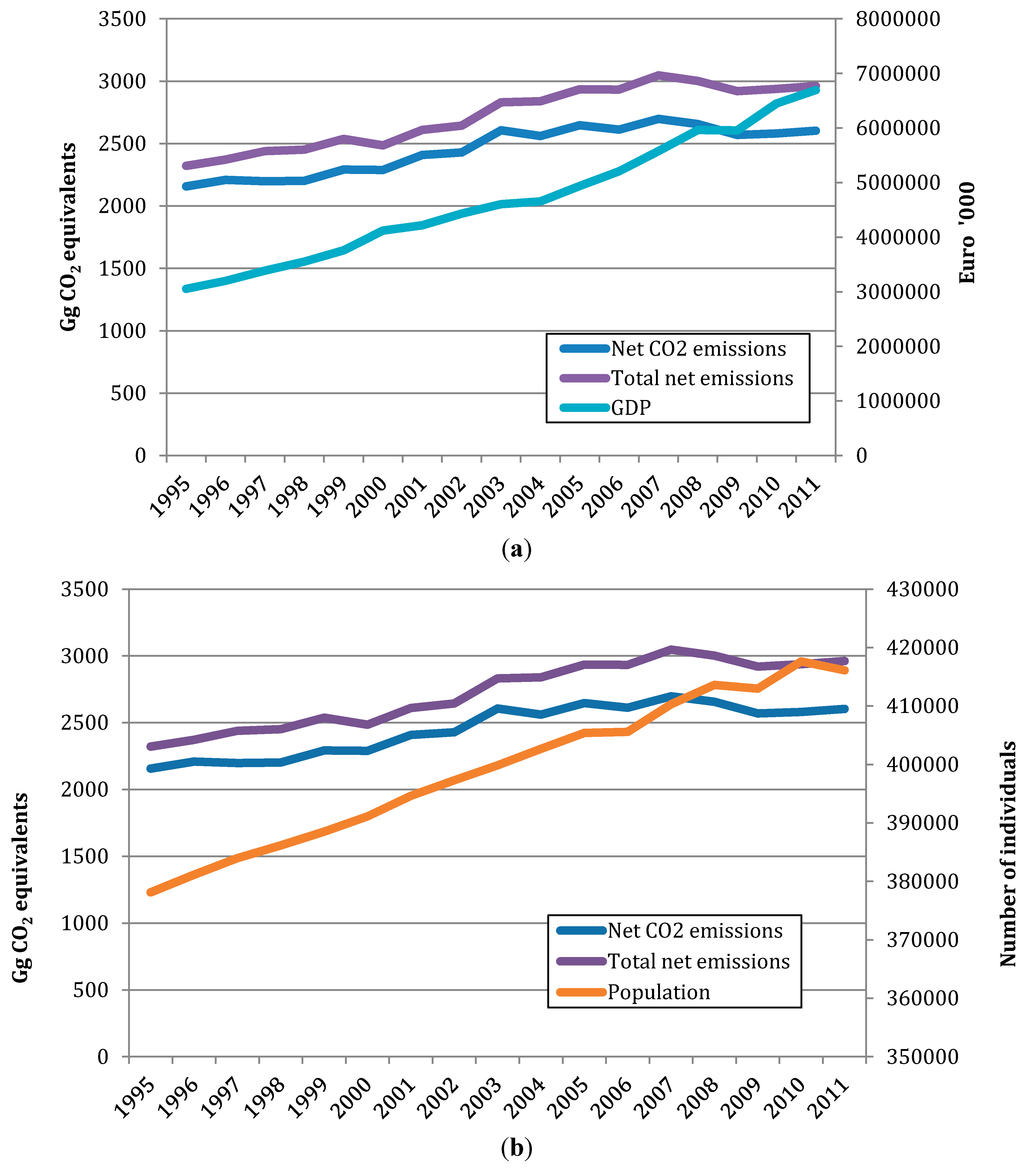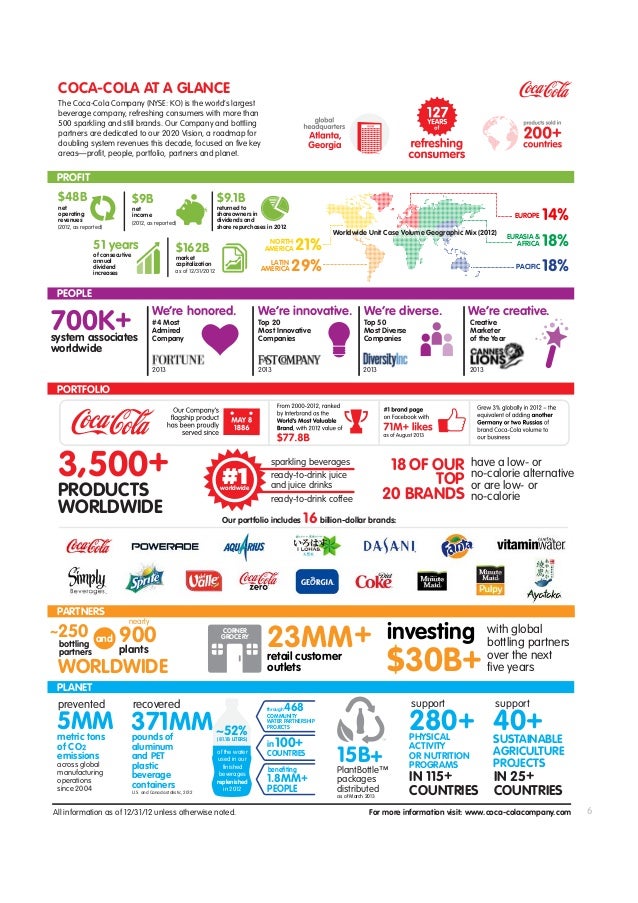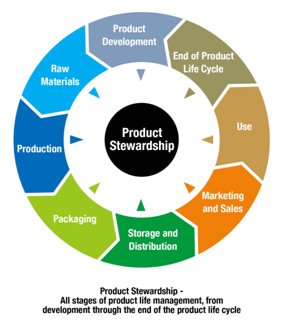Designers utilize design approaches that support sustainable development across a variety of contexts. A holistic and systematic approach is needed atall stages of design development to satisfy all stakeholders. In order to develop sustainable products, designers must balance aesthetic, cost, social, cultural, energy, material, health and usability considerations.
Triple bottom line sustainability does not only focus on the profitability of an organization or product, but also the environmental and social benefit it can bring.
Organizations that embrace triple bottom line sustainability can make significant positive effects to the lives of others and the environment by changing the impact of their business activities.
| Sustainable Development | Sustainability |
Sustainability & Sustainable Development
Term: Sustainability is the long-term maintenance of responsibility, which has environmental, economic and social dimensions. It is the capacity to endure and maintain.
-
- Autodesk, Coca Cola and McDonald’s approach to Sustainability.
Term: Sustainable Development meets the needs of the present without compromising the ability of future generations to meet their own needs.
Triple Bottom Line Sustainability
Term: An expanded spectrum of values and criteria for measuring organizational success: economic, environmental and social.
TBL
|
|
Environmental Aspect of TBL
- It is technically possible to deliver the same or equivalent goods and services with lower environmental impact while maintaining social and equity benefits.
- Is involved in maintaining the ecosystem by optimising (using) its resources more prudently.
- This could include redesigning production system to be more efficient.
- Maintaining ecosystem integrity
- Assess and work within the carrying capacity (the size of a population that an ecosystem can support without degradation of social, economic and environmental systems).
- Recognising and maintaining biodiversity.
- Historically there has been a close correlation between economic growth and environmental degradation—as economic prosperity increases so environmental quality decreases.
- This trend is clearly demonstrated on graphs of human population numbers, economic growth and environmental indicators, see graph below.
- Sustainable development frameworks enable the evaluation of the complex and interrelated concepts that are associated with development.
Social Aspect of TBL
- There is a correlation between economic development and human well-being.
- See graph below.
- International Development on Wikipedia. It mentions economics influence.
- Social sustainability:
- Designing to develop goods and services for the enhancement of human well-being,
- maintaining cultural identity,
- empowerment of local communities,
- accessibility to resources and services,
- stability of communities not placing them in upheaval
- social and gender equity
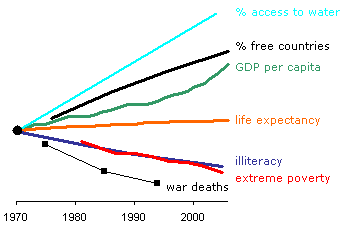
Economic Aspect of TBL
- Economic development increase the GDP and spending power of people this results in consumption of resources leading to a negative environmental impact.
- Designing for sustainability is dependent upon an understanding of the short- and long-term goals and values of individuals, institutions and governments.
- It is about the big picture that allows economic activity to rise while:
- reducing resource use and reducing environmental impact.
- maintaining economic growth,
- development,
- improving productivity,
- facilitates the economic trickle-down affect to local communities
- Close cooperation is required between designer and manufacturer.
- The importance of sustainability issues and strategies is critical to sustainable economic development.
Decoupling
Term: Decoupling refers to disconnecting two trends so that one no longer depends on the other. Through the act of decoupling (using resources more productively and redesigning production systems), it is technically possible to deliver the same or equivalent goods and services with lower environmental impact while maintaining social and equity benefits.
- Decoupling is a strategy for sustainability
- Consider the benefits and limitations of decoupling as an appropriate strategy for sustainability
- Wikipedia on decoupling

International and National Laws
- The use of international and national laws to promote sustainable development
- Nations need to adhere to the treaties/laws usually through enforceable domestic legislation.
- International and national laws encourage companies to focus on something other than shareholder value and financial performance
- Adopting a corporate strategy that has the support of shareholders/stakeholders can be difficult to achieve.
- International and national laws encourage companies to focus on aspects other than shareholder value and financial performance,
- These include transparency of corporate sustainability, transparent sustainability assurance and whether businesses, public services, national resources and the economy have the means to continue in the years ahead at a micro and macro level.
- Kyoto Protocol on carbon emissions
- Rio Earth Summit on sustainability
Sustainability Reporting
Term: A company report that focusses on four aspects of performance: Economic; Environmental; Social; and Governance.
A sustainability report is an organisation report that provides information on its performance in 4 areas:
- Economic
- Environmental
- Social
- Governance
The reliability and acceptance of sustainability reporting requires accurate data gathering to be maintained over a lengthy period of time.
Benefits of sustainability reporting for:
| Governments | Manufacturers | Consumers |
|
|
|
Product Stewardship
- Everyone involved in making, selling, buying or handling equipment (products) takes responsibility for minimizing environmental impact of the equipment at all stages in the life cycle.
- Designers may need to respond to consumer pressure as more consumers become aware of resource issues and product labelling.
Some examples of product stewardship include:

|

|

|
 Forest stewardship – Forest stewardship –
|
 Bio-plastics Bio-plastics |
- The following areas should be explored through case studies in terms of product stewardship:
- NYC programme
- Link to an AHA graphic (its big1)
International Mindedness
Changes in governments sometimes result in the reversal of sustainable development policies leading to different approaches to international agreements.
Theory of Knowledge
Design involves making value judgments in deciding between different ways of interacting with the environment. Is this the case in other areas of knowledge?
Something extra …
Explain how sustainable development requires close cooperation between manufacturers and government.
- Both parties will have different definitions for sustainable development
- Governments have targets that need to be met
- Must be communicated to industry
- Meeting those targets will cost industry money especially if they are radical system changes.
- Governments need to listen to industry
Explain how a close relationship between manufacturers and government can be difficult to achieve because the two parties may have very different perspectives on sustainability and time-scales.
- Industry is more concerned with profits and would most likely continue using unsustainable practises until told to otherwise.
- Governments what sustainable practises implemented for what ever reasons
- Pressure on Governments to speed implementing sustainable practises
- Industry will ‘drag its heels’ since system level changes can be expensive at the start.

